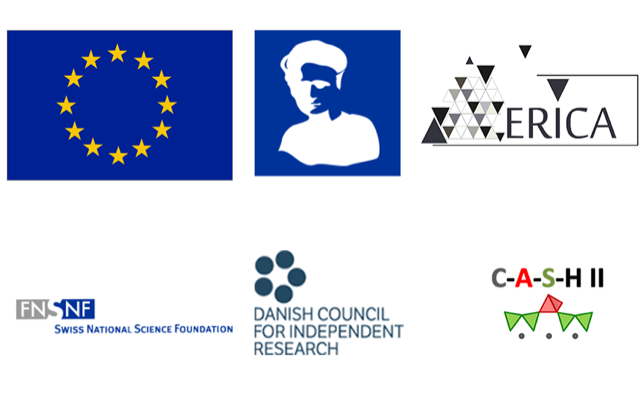Events calendar

ERICA-CASH II Final Conference
Inorganic hydrates such as calcium-silicate-hydrate, abbreviated C-S-H, are “wonder” materials exceedingly rich in terms of potential applications that can be produced in almost any shape or form, cheaply and in large quantities right across the world from local and sustainable resources. C-S-H is the “glue” of cement, itself the glue of concrete, material with enormous economic impact. But C-S-H and other hydrates are also used as a filler in paper and in polymer composites, as dental filling materials, for waste water treatment in fertilizers and as insulation and encasement materials including for nuclear waste.
C-S-H is the main phase controlling the performance of cement-based materials. These materials are so widely used that their production is the leading industrial source of greenhouse gases, contributing about 8% of global CO2 emissions despite very low emissions per kg. Engineering C-S-H growth for faster strength development and for improved performance, such as water transport that affects C-S-H durability, is key to further lowering the CO2 impact of construction.
About ERICA
ERICA, a project funded by the European Union under the Horizon 2020 – Marie Skłodowska-Curie – Innovative Training Network programme, is an innovative, five-nation project straddling materials science and engineering, physics and chemistry in diverse areas of experimentation and computational modelling.
The overarching aim of the ERICA project is to understand how to engineer hydrates at the nanoscale and to enable improved engineering applications.
About CASH II
Another way to reduce CO2 emissions is to partially replace Portland cement by Supplementary Cementitious Materials (SCMs) such as blast furnace slag, fly ash, silica fume or calcined clays. However, these SCMs cause changes in C-S-H composition.
CASH II is a Swiss-Danish research project investigating the effect of aluminum, potassium and sodium on the structure and solubility of C-S-H, using innovative experimental methods and computational modelling.
Five thematic sessions
1. Nucleation and growth of C-S-H: Nanoengineering of cementitious materials
2. Nanoscale phenomena during the first and subsequent sorption cycles
3. Transport of water and small ion through agglomerates of hydrates
4. Upscaling for applications: multiscale modeling and lab-to-market transition
5. Thermodynamics of Calcium-Aluminate-Silicate-Hydrates
Important dates
Abstracts
Submission of 150 words abstracts Jun 30, 2020
Notification of acceptance Jul 20, 2020
Submission of two-page abstract Oct 31, 2020
Registration
Early registration deadline Aug 31, 2020
Registration deadline presenters Oct 31, 2020
Conference dates Jan 24-27, 2021
See all events
From Sunday 24 January 2021
to Wednesday 27 January 2021
Print Media Academy (PMA)
Kurfürsten-Anlage 52-60
69115
Heidelberg, Germany
Print Media Academy (PMA)
Kurfürsten-Anlage 52-6069115 Heidelberg, Germany
Comments
You have to be logged on to leave a comment Log in



 Flyer
Flyer